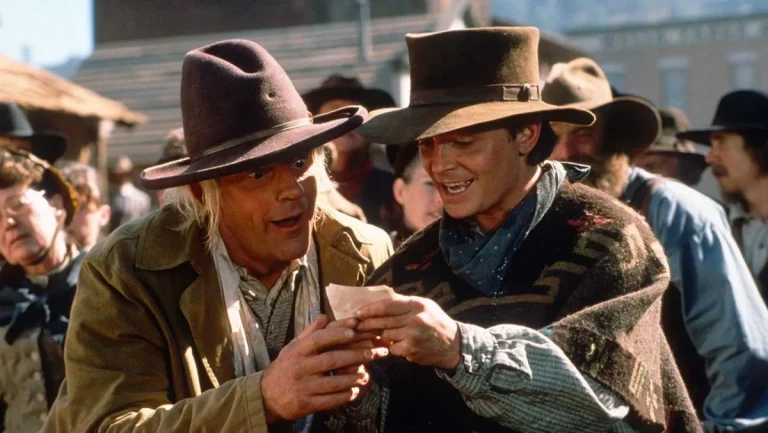What’s the scariest horror film you have seen? Fans of conventional horror will come up with answers like “The Exorcist” and “The Conjuring.” Psychological horror enthusiasts will pick classics like “The Shining” and “Rosemary’s Baby.” And the handful of animated horror fans will choose films like “Perfect Blue.” All these horror movies have some tangible or psychological elements that elicit scares. These elements are sometimes monsters and sometimes volatile psychological states of humans. However, there is a presence of some kind of evil in these films. You know, there is someone or something evil that is there to terrify you.
While these horror films are competent and effective in doing their jobs of scaring the audience, there is one kind of horror apart from these that manages to have a more profound impact on me. To me, Social Horror is scarier than any demons, zombies, or evil humans. It is one thing if an individual wants to be a vigilante, but what about an entire community wanting vengeance? And then what if technology enabled them to make the guilty relive their torment? What could possibly be scarier than this?
Although I love seeing this kind of horror explored in films, hardly any films depict it with the utmost finesse. “The Hunt” (a.k .a. “Jagten”) is one such film. When I first watched it, I wasn’t well-versed in Danish cinema (I still am not, but I have seen more over the years). I went in blind, and when the end credits rolled, I was shivering with fear. It was an agonizing experience, and I hadn’t ever felt so terrified after watching a film. To this day, the haunting memories from the movie make me feel sick to my stomach. Why did it terrify me so much? Moreover, why do I feel it is the most accurate depiction of Social Horror? I will try to elucidate it below.
The Hunt Scares You with No Tangible Evil
I assume those reading this piece have already seen the film, so I won’t get much into the plot details. I will get straight to what makes “The Hunt” so compelling. Lucas (Mads Mikkelsen) is the most tragic movie character I have seen in the last decade. The movie makes it clear from the beginning that he is wrongly accused of sexually abusing a child. Hence, no moral ambiguity is associated with him; we know he is a good person who is wronged everywhere.
But who is the villain in Lucas’s story? Who is the evil character here? The answer is no one and everyone. After finding out about Lucas’ crime, everyone starts treating him as the public enemy. What begins is a series of events that reshape the trajectory of Lucas’ life in a downward spiral. To Lucas, the townspeople are a group of vigilantes teaming up to ruin his life completely. But to the people of the town, Lucas is the evil who must be eliminated from their lives to ensure their family’s safety.
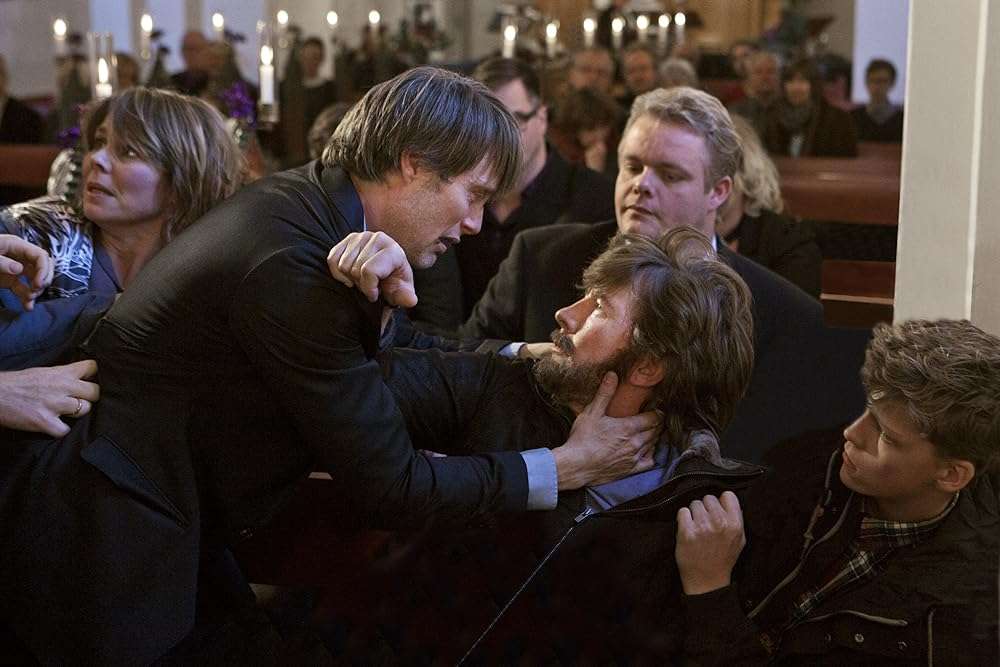
First of all, Thomas Vinterberg avoids creating conventional dramatic highs and lows throughout the picture. Everything happens at the same pace, and there is no tonal shift for agonizing moments or catharsis in emotional moments. The evil is felt in every single scene of the film. Yet you cannot figure out who or what the actual evil is here. The child who just fabricated a false story combining two instances using her vivid imagination? The people of the town who made a mountain out of the molehill without bothering to examine and learn the actual truth? Little girl’s brother, who, in his ripe teenage years, showed something inappropriate to her sister that went on to ruin a person’s life? Evil is everywhere and nowhere, and that is what makes the film so impactful and frustratingly good.
Lack of Ambiguity Elevates the Narrative
There is nothing ambiguous in “The Hunt” (apart from the ending). Everything is in front of our eyes, plain and clear. We know Lucas is innocent. We know the people of the town who have taken on themselves to make something right that was not wrong in the first place are just persuaded by the innocent lies of a little girl, which is further twisted. Everything is happening in front of our eyes, and we are watching it in a state of helplessness.
Vinterberg shows the horror that is right in front of their eyes as if it’s a mundane activity. He keeps twisting an infected dagger farther into our hearts, making us feel Lucas’ suffering in all of its severity. So even tender moments like him hugging his separated son don’t provide the audience with any kind of respite. Instead, it seems like a brief burst of warmth that will soon fade into oblivion, and we will be forced to watch this never-ending nightmare that becomes worse and worse as it goes on.
The Cycle of Horror Continues…
At the end of “The Hunt,” following the spine-chilling church scene, we see that the town now believes Lucas is innocent. One year has passed since the horrible incident, and he has been welcomed back into the community. As soon as we think that things are finally on the right track and Lucas gets the ending he deserves, we hear a gunshot from afar (during a hunting expedition with the supposedly reconciled friends). The shooter is too far away that the person’s face is not visible. Lucas barely survives that gunshot and looks at the shooter in anguish.
This implies that Lucas will keep on living in fear, and the social horror he experiences will have no end. Some vigilantes in society will rise up again to eliminate the allegedly evil Lucas from the town as a threat. An innocent lie has irrevocably ruined his life. He can never live an ordinary life like the other townspeople. “The Hunt” makes me feel things even the scariest of horror films can’t. It doesn’t dramatize anything or display overt horror elements, yet it makes me uneasy as if an elephant has stepped on my chest. To me, that is the most accurate depiction of social horror that will hardly be topped by anything.



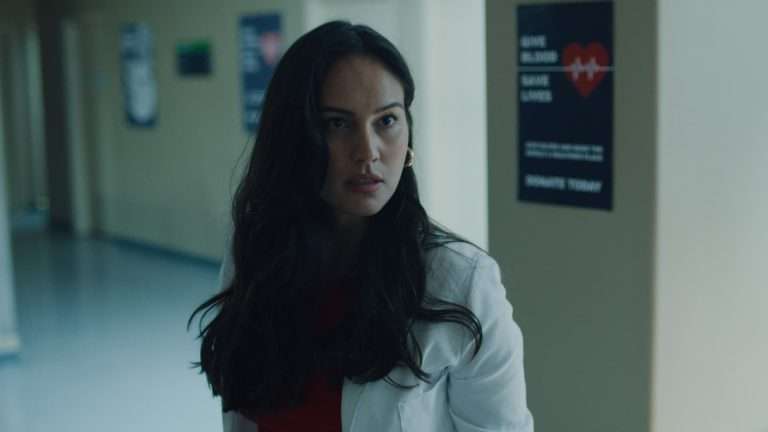
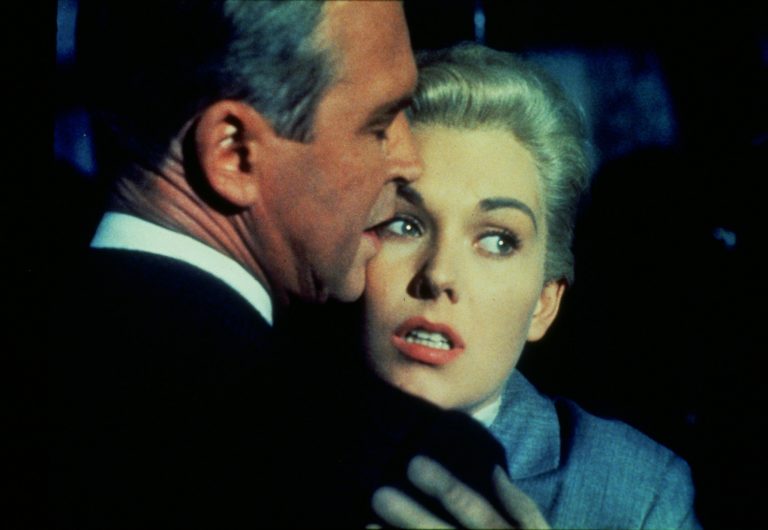
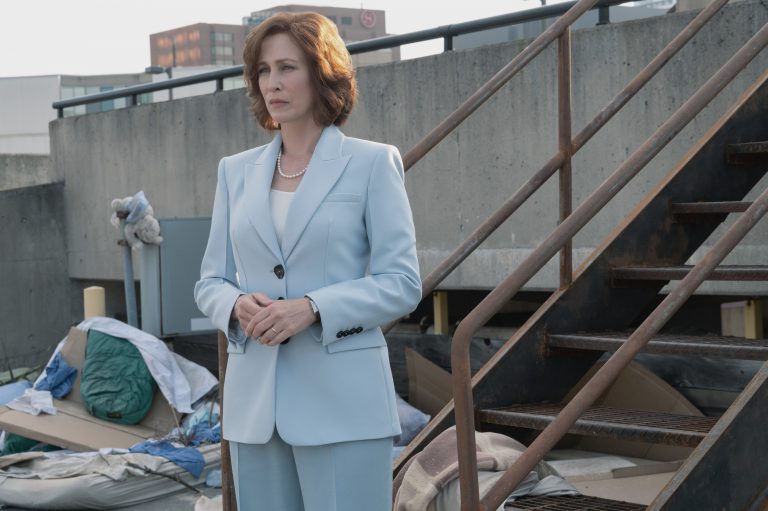
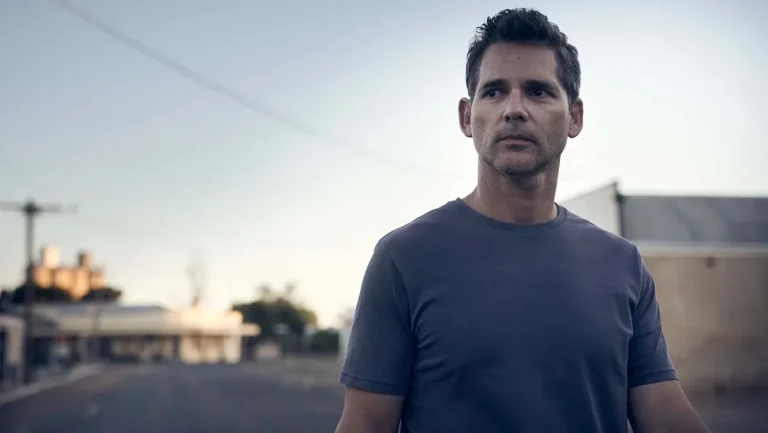
![The 400 Blows [1959]: An unsentimental film about Adolescence](https://79468c92.delivery.rocketcdn.me/wp-content/uploads/2015/12/vlcsnap-2015-12-01-22h42m06s658.png1.jpg)
